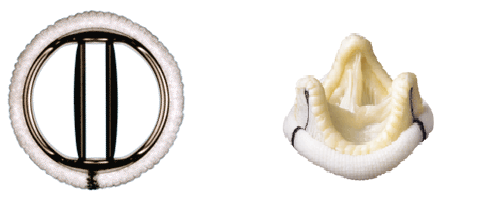Both narrowed and leaky heart valves lead to increased strain on the heart muscle and can result in heart failure if left untreated. For this reason, regular examinations by a cardiologist are essential so that the right time for heart valve surgery can be discussed with the patient in good time.
Surgical procedures for the treatment of defective heart valves
Diseased heart valves can either be repaired (“reconstructed”) or must be replaced. The mitral valve and the tricuspid valve (inlet valve of the left and right ventricle respectively) are the most easily reconstructed heart valves. The aortic valve can also be repaired using special techniques in individual cases, especially if the aorta is dilated at the same time.
In recent years, reconstruction techniques have been further developed and can now be carried out with lasting results. During the repair, modern surgical procedures, sometimes without artificial materials, restore the patient’s own valve. The main advantages of reconstructing a heart valve are the avoidance of lifelong blood thinning and a lower risk of infection.

Mechanical flap (left) and biological flap (right).
If the diseased valve cannot be preserved, it is replaced with an implant. We differentiate between “mechanical” and “biological” valve prostheses. A mechanical flap consists of two small wings made of carbon (double wing flap). The main advantage of this flap is its practically unlimited service life. However, a lifelong blood thinner must be taken for this. Biological valve prostheses consist of porcine (pig) or bovine (cattle) pericardium (pericardial tissue) and are very similar in structure to a human heart valve. In contrast to mechanical valves, biological valves do not require long-term blood thinning. However, these valves have a shorter lifespan and are used in patients aged 60-65 years and older. The service life of these flaps is usually ten to 20 years.
